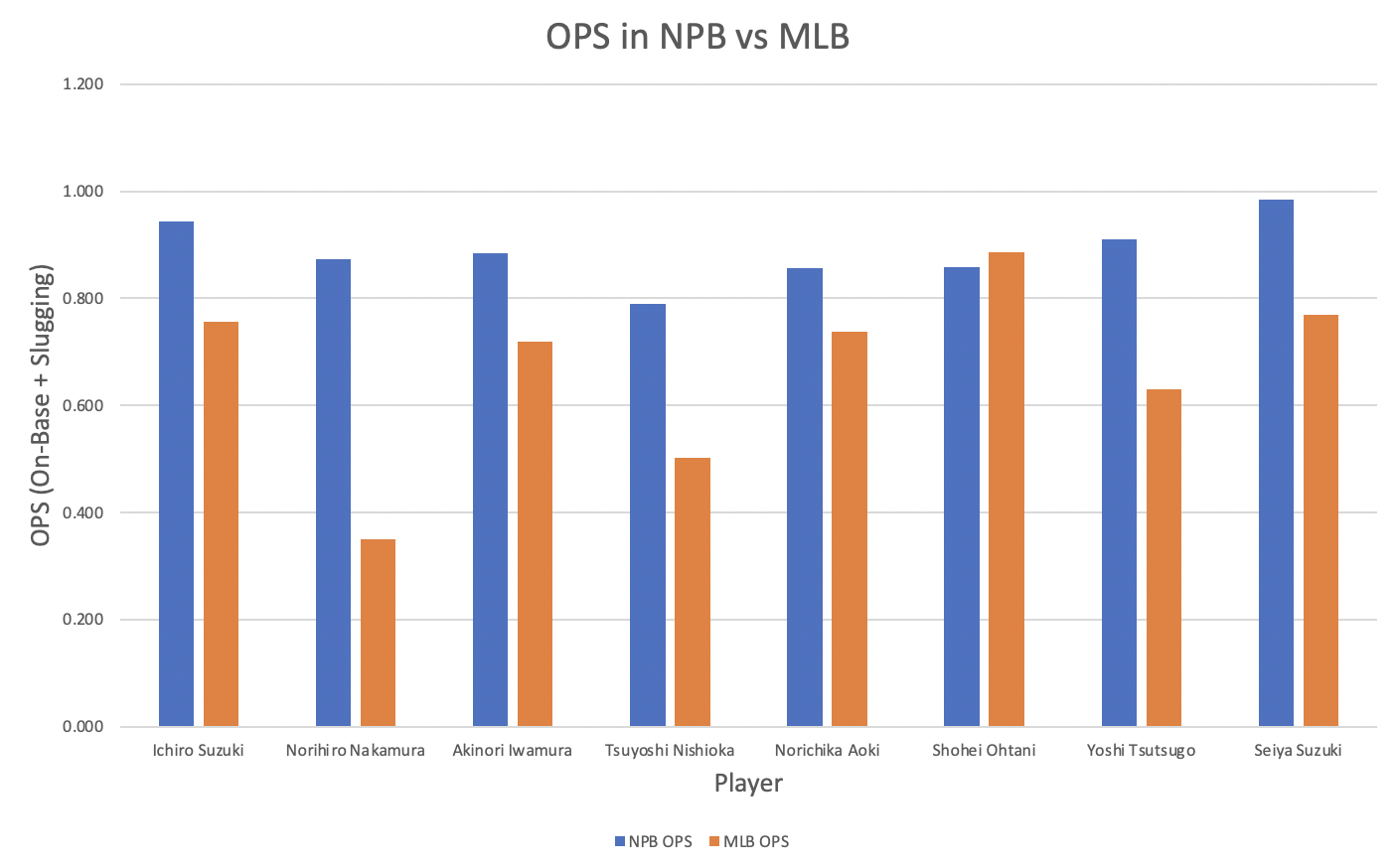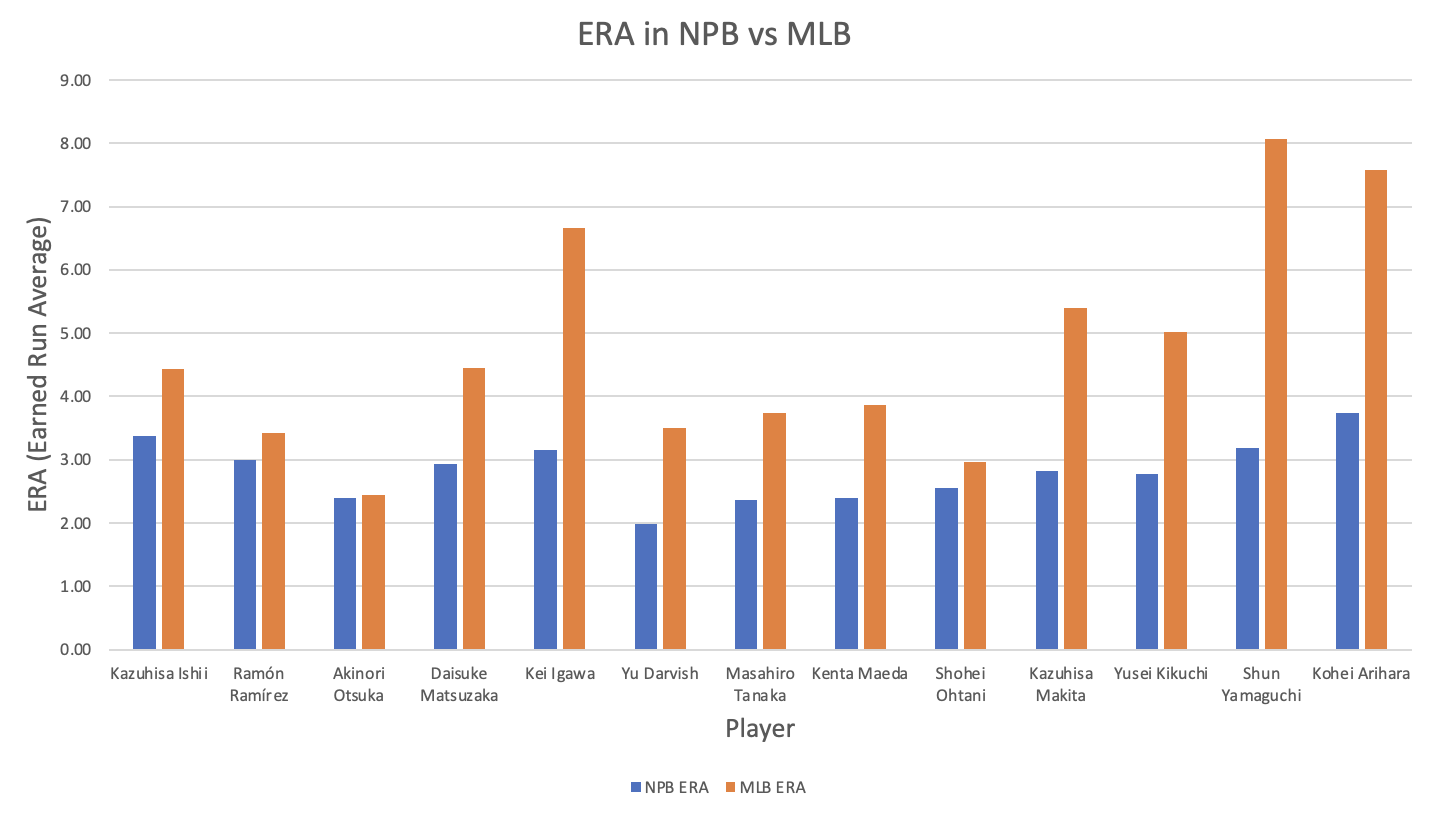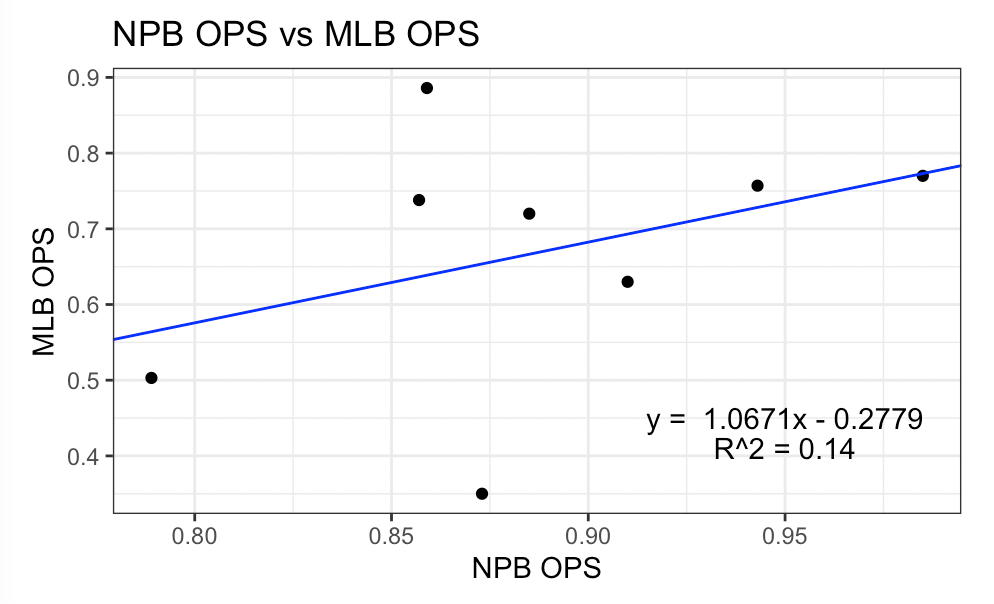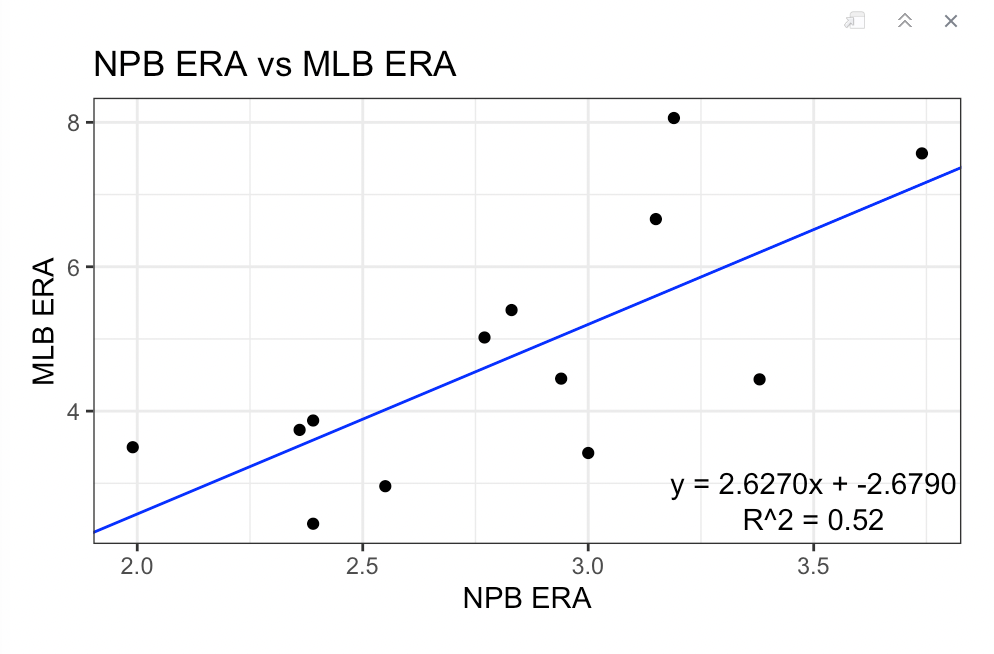From Japan to MLB: The Players Before and After Signing
By CJ Lu Sing | November 29, 2022

Shohei Ohtani became the “Face of Baseball” in his 2021 MVP season, where he posted elite numbers on the mound and at the plate. However, Ohtani’s success drew attention to his former league, Nippon Professional Baseball (NPB, 日本野球機構), or Japan’s highest level of professional baseball, which emphasized baseball’s status as an international sport.
Baseball’s origins in the United States give it the moniker “America’s pastime,” but in today’s game, North America’s Major League Baseball (MLB) is more diverse than ever. International players from Latin America – the Dominican Republic, Venezuela, Cuba, etc. – have emerged as superstars and brought excitement to the game. Moreover, for decades, players from the other side of the world have also been making names for themselves in MLB. Japan is Asia’s leader in baseball (South Korea and Taiwan also have prominent leagues), and as a result of a strong baseball culture, the talent emerging from the region is impressing baseball fans worldwide.
Comparing NPB and MLB
NPB and MLB are extremely similar on a surface level. Any MLB fan would find NPB games a familiar experience with high-quality baseball played for nine innings in stadiums with electric atmospheres. The most noticeable differences are found in the stands, where Japanese baseball fans celebrate the game with chants and fight songs. However, there are also key differences in gameplay.
Not only are baseballs themselves different, as the standard Japanese baseball is smaller than the MLB version, but the nuance behind how the game is played is different. Ties are enforced after twelve innings and most teams use a six-man rotation. Pitchers tend to throw more breaking balls and the strike zone is smaller. NPB is thus seen as a more defensive-centric league.
Frequently, North American baseball fans refer to NPB as “AAAA.” Although more competitive than Minor League Baseball’s AAA baseball, NPB is not quite Major League Baseball.
The Posting System
NPB’s Central and Pacific Leagues are composed of twelve teams, each of which competes in a 143-game season culminating in the Japan Series (their equivalent to the World Series). Throughout the NPB, talented players fill the rosters of each team, and over the past few decades, many have had their eyes set on bringing their skills to North America’s MLB.
However, to get to Major League Baseball, not only do NPB players have to develop into MLB-ready talent, they also have to overcome the posting system. Prospects in the United States, Canada, and U.S. territories, namely Puerto Rico, typically enter affiliated baseball through the draft. Other prospects sign directly with the team and enter their Minor League affiliates. Many other international players are able to sign directly during the International Signing Period. However, MLB and NPB have agreed to the posting system, a player transfer system, to regulate the flow of players between the leagues.
Any NPB player who wishes to join an MLB team must be “posted” by their NPB team. Any MLB team who wishes to sign the player must pay their NPB team a posting fee as compensation. The exact process to determine the posting fee is constantly evolving, but the ultimate goal of the posting system is to prevent MLB teams from poaching all talent in Japan and leaving NPB in a financial crisis. South Korea, Taiwan, and Mexico’s baseball leagues also have similar agreements with Major League Baseball. 22 NPB players have joined MLB under the posting system, and over the years, many have become superstars.
The posting system allows NPB to retain top talent. Therefore, most NPB players who MLB teams decide to take a chance on are those gauged to be MLB-caliber.
Measuring Talent
Of the 22 NPB players who were posted and signed with an MLB team, nine were position players and 14 were pitchers. As a two-way player, Shohei Ohtani is counted as both a hitter and pitcher. Note, two of those players, Alejandro Díaz, who was the first to sign under the modern posting system, and Shinji Mori joined MLB organizations but never played at the Major League level. Those who did achieve the Major Leagues, however, achieved varying degrees of success.

The above graph compares the career NPB and MLB OPS (On-base plus slugging) of the eight NPB players who reached the Major Leagues. Each player’s NPB OPS was obtained using only their statistics before they signed with an MLB team. Any NPB stats after a player’s first game in MLB were disregarded in calculations.
Conventional baseball wisdom suggests an .800 OPS constitutes a good offensive season, and all but one of the examined NPB-to-MLB players maintained an .800 NPB OPS or higher. This is unsurprising because MLB teams typically prefer signing the best players on the market. Seattle Mariners legend Ichiro Suzuki and Chicago Cubs rookie Seiya Suzuki were established superstars in NPB each with an OPS above .900!
However, the data reveals that former NPB players in MLB tend to struggle offensively after joining an overseas team. Shockingly, Norihiro Nakamuro’s OPS declined .119 points!
All but one player saw their OPS drop in MLB. So far, the exception is Shohei Ohtani, whose OPS after signing with the Los Angeles Angels is .27 points higher. However, generally, OPS only declined slightly. Nori Aoki had a great MLB career, Akinori Iwamura had solid seasons, and Seiya Suzuki had an incredibly promising start to the 2022 MLB season.
Of course, Ichiro Suzuki was exceptional at all levels of baseball. Ichiro’s achievements are seemingly endless: 3,089 career hits (4,367 hits including NPB), 2001 MVP and Rookie of the Year, ten-time All-Star, three-time Silver Slugger, and two-time batting champion. However, his MLB OPS was likely deflated because of a prolonged career. His OPS with the Seattle Mariners in his first ten seasons, from 2001 to 2010, was .806, which is .49 points higher than his career OPS of .757 and is what establishes him as an all-time great hitter.

This second graph compares the career NPB and MLB ERA (Earned Run Average) of the 13 NPB pitchers who reached the Major Leagues. Similar to the previous dataset, NPB ERA was calculated using only data before a player’s first MLB game. For example, any of Masahiro Tanaka’s statistics collected in the NPB after he departed the New York Yankees following the 2020 season were completely ignored in his displayed NPB ERA.
Comparing NPB and MLB ERA reveals that all pitchers took a step back in terms of ERA. There is no NPB player who had a lower ERA in MLB, but given the alleged higher level of competition, slightly higher ERAs should be unsurprising. Yu Darvish’s 3.50 career MLB ERA is reasonable production, and any GM would appreciate a solid season from the former All-Star.
Many other pitchers have put up solid MLB numbers. Shohei Ohtani joins Yu Darvish as arguably the best Japanese pitchers playing in MLB today, and both are the ace of their respective team’s pitching staff. Ohtani’s pitching improved dramatically in 2022 with a 2.33 ERA with 219 strikeouts over 166.0 innings pitched. He recently finished fourth in the BBWAA’s 2022 Cy Young Award voting. Furthermore, Kenta Maeda and Masahiro Tanaka have each put up solid seasons in recent years, and there is promise in pitchers like Yusei Kikuchi who continue adjusting to MLB offense.
Generally, NPB players, hitters and pitchers alike, take a step back in terms of production when playing overseas. However, this is likely due to an elevated level of competition in MLB. Most non-Japanese MLB players were more productive at AA and AAA levels, and the transition from NPB to MLB should be considered in a similar manner. Moreover, many players who make the transition from Japan to North America must face the additional challenge of adapting to life outside of their home country. This psychological aspect, although scarcely studied, is likely a significant factor in post-NPB performance and places a great burden on these players.
Predicting Talent
Data from NPB-to-MLB players can be used to predict performance of future Japanese players transitioning to Major League Baseball. A linear regression analysis predicting MLB performance from NPB production can provide an expected level of MLB OPS or ERA and the strength of the prediction.

The above graph plots each of the eight NPB-to-MLB hitters’ MLB OPS against their NPB OPS. Unsurprisingly, it reveals that players with a higher NPB OPS are generally more likely to have a higher MLB OPS. The line of best fit imposed on the graph shows how, according to the data, a player should perform in MLB based on their NPB performance.
There are outliers, namely Shohei Ohtani (.859 NPB OPS vs .886 MLB OPS), who was a great NPB player but continued to post elite numbers in MLB and vastly exceeded expectations. According to this model, Ohtani’s predicted MLB OPS, based on his .859 NPB OPS, should be 0.639. This means Ohtani outperformed expectations by 0.220 points.
On the other hand, Norihiro Nakamura (.873 NPB OPS vs .350 MLB OPS), as mentioned earlier, vastly underperformed in his single season with the Los Angeles Dodgers. His predicted MLB OPS should be 0.654. This disparity demonstrates some players adapt to MLB competition better than others, and some, like Ohtani, thrive on baseball’s biggest stage.
There are limitations to this model, which has an incredibly low R^2 value, but there does seem to be a trend in the more established NPB players having more successful MLB careers. This analysis could be improved upon with a larger sample size, which will come as more NPB players join MLB, and more NPB data becoming available for public use.

In contrast, this above graph plots each NPB-to-MLB pitchers’ MLB ERA against their NPB ERA. A similar pattern emerges, where those with higher NPB ERAs tend to have a higher MLB ERA. Therefore, the best pitchers in NPB typically had similarly low MLB ERAs.
This model almost perfectly predicted Masahiro Tanaka and Kenta Maeda’s MLB ERAs based on their NPB ERAs. Masahiro Tanaka, with a 2.36 NPB ERA, should have a predicted 3.52 MLB ERA. He had a 3.74 MLB ERA with the New York Yankees. Kenta Maeda, with a 2.39 NPB ERA, should have a predicted 3.60 MLB ERA. He had a 3.87 MLB ERA with the Los Angeles Dodgers and Minnesota Twins.
Shun Yamaguchi’s 8.06 MLB ERA is an example of a pitching performance that failed to maintain NPB levels, but generally, NPB-to-MLB pitcher performance is easier to predict compared to the offensive model. Outliers still exist amongst these 13 pitchers. However, there is a slightly higher sample size and the variability between NPB and MLB performance is generally smaller. R^2 is higher, but its low value indicates there are still other factors at play determining pitcher performance. Still, improvements to this model could easily be made with the introduction of more data collected in Japan.
The Future of the NPB-to-MLB Pipeline
Two NPB All-Stars are hoping to make an impact in the 2023 MLB season: Masataka Yoshida and Kodai Senga. Yoshida would provide a sensational outfield bat and Senga would provide an electric arm in any team’s starting rotation. Both offer tests of the aforementioned models.
Masataka Yoshida had a 2022 slash line of .335/.447/.561, which amounted to an incredible, career-high 1.007 OPS. A 2022 Japan Series champion, Yoshida would bolster many MLB teams’ outfields. This past season, Yoshida had 21 home runs and was a disciplined hitter with a 15.9% walk rate against a 8.2% strikeout rate.
However, using the OPS-based model, the only relevant statistic is Yoshida’s NPB career .960 OPS. It would result in a predicted 0.747 MLB OPS, which would be a solid season for many players. Overall, the predicted result is comparable to Seiya Suzuki’s 2022 rookie campaign, where he jumped from a .985 NPB career OPS to a .770 MLB OPS. However, with the extreme variability in the model, it would be unsurprising if Yoshida's 2023 MLB debut went in a completely different direction.
Kodai Senga of the SoftBank Hawks has been named as a top pitching target for several MLB teams: the New York Mets, Chicago Cubs, San Francisco Giants, San Diego Padres, and others. In 2022, Senga had a 1.94 ERA with 159 strikeouts in 148 innings. His fastball sits at 96 mph, but scouts are awed by his “Ghost Fork” with a 50 percent whiff rate. As a free agent, Senga would not be attached to a posting fee, but concerns about his injury history linger.
However, with the ERA-based model, only Senga’s NPB career 2.59 ERA matters. Using this model, Senga would have a predicted 4.12 MLB ERA. Using only his 2022 numbers, Senga would have a 2.42 MLB ERA. Yet, over the years, many Japanese pitchers have struggled in the years immediately following inking an MLB deal. Assuming Senga’s pitches hold up in MLB and he receives favorable matchups, he could perform near a 2.42 MLB ERA, but a 4.12 MLB ERA would be unsurprising.
There is nothing stopping Nippon Professional Baseball from being a reliable pipeline for MLB-level talent. Many superstars, from Ichiro to Ohtani, have made an impact in Major League Baseball. However, for the time being, predictions for MLB hopefuls will be limited by small sample sizes and insufficient data on advanced analytics. MLB teams who wish to better scout Japanese baseball would benefit from greater investments into data collection for these players. Tools like Statcast have revolutionized player development in MLB, and NPB’s adoption of more advanced analytical tools would similarly transform how front offices, coaches, players, and fans view baseball.





